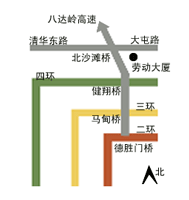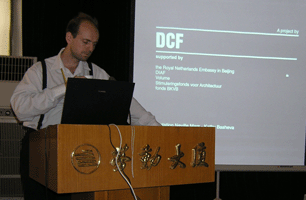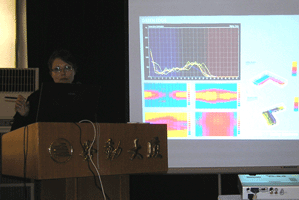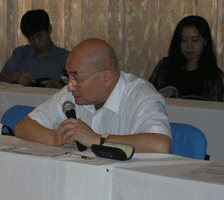
 |
The 19th Design Forum | |||||||||||||||||||||||||||||||||||||||||||||||||||
Introduction Designers Member list Sponsorship New Books Newsletter |
||||||||||
 |
||||||||||
The 19th
dcb forum Place:
7th F,Laodong building |
||||||||||
The topic: Sustainable City |
||||||||||
| Main contents:
1 Urban Growth & Sustainability (Mr.Nevile Mars & M/s Kathy Basheva) Introduction : Problematic China, Environment – relevancy , Law-Environment-Energy Gree, Climate adaptation, Definition of the climate, Needs – conclusion, Current Typologies and Building Characteristics – Plan-Extrusions? Hybrid-Hutong? Planning Proposal:Typology, Thermal balance and indoor improvement due to combination of technologies, Energy and GHG emissions, Feasibility Conclusion Glossary: Common Goods – use of natural and goods shared with others or beneficial for all (or most) members of a given community., e.g. air, water, energy. Greenhouse gas emission - Defines the equivalent number of kilograms of greenhouse gasses resulting from the production and installation of one unit of this material. (ecotect) Mega-cities - urban agglomerations with current or projected populations of 10 million or more by the year 20 00. Hybrid-hutong? - a hybrid between the tourist oriented classic hutong courtyard house lacking the traditional features suffering inadequate infrastructure, bad quality construction materials. Plan-Extrusions? - two or more residential units per floor extruded multiple times usually around a pear of elevators and technical supply having differing plan design but lack of any three-dimensionality, climatic adaptations nor energy-saving design features Regionalism - Behind the process of regionalisation lies the concept of regionalism. This can be seen as the normative aspects, or values, that underly regionalisation e.g. the (contested) European identity. Wikipedia U-Value - A measure of air-to-air heat transmission (loss or gain) due to thermal conductance and the difference in indoor and outdoor temperatures. As the U-Value decreases, so does the amount of heat that is transferred through the glazing material. The lower the U-Value, the more restrictive the fenestration product is to heat transfer (Reciprocal of the R-Value). 2 The Latest Report of World Design(dcb Group) 3 How to Apply the Sustainable Society in Architectural Environments(Mr.Xu Shu Long from Yearbook of Interior Design of China) |
||||||||||
 |
 |
|||||||||
|
||||||||||
| 1 Architect Nevile Mars is speaking | 3 Mr. Liangjin from CIID | |||||||||
 |
 |
|||||||||
| 2 Architect M/s Kathy Basheva | 3 Mr. Xu Shulong from Yearbook of Interior Design of China | |||||||||
The Admission Ticket:100
RMB |
||||||||||
| Download the poster | ||||||||||
| More details about the forum:http://www.fancy-design.com/dcb/2004forum_e.htm | ||||||||||
| Practical
Tips and Exercises in Environmental Friendly
Design Architectural or interior design that are environmentally friendly can bring tangible benefits, through the application of 3Rs principles. For example: 1. Reduce |
||||||||||
Design Collaboration,Beijing All rights reserved No.100101-200 P.O.Box, Beijing 100101 P.R.CHINA Phone: +86-10-64956392 teresa_wu_cn@yahoo.com |